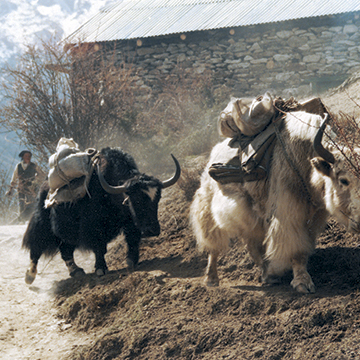


TIBETAN REFUGEEs
In 1959, Chinese invasion forced Tibetans to migrate by the thousands through the Himalayan mountains in search of a new home. Many settled in the Kathmandu valley where they received the support of the Swiss government to initiate a cottage industry of carpet weaving based on centuries-old tradition and technique. Initially, small rugs were produced for the growing tourist population in Nepal. In the 70s, German buyers recognized the charm and beauty of the Tibetan carpets and began to buy and distribute the designs throughout Europe. In the 80s, Tibetan carpet production rose to second standing as the nation's leading industry and it wasn't long before rugs were being designed and imported to the United States for the American market. It is important to note that since the Chinese invasion of Tibet and the subsequent nationalization of the rug weaving industry, the best quality Tibetan rugs currently being manufactured on a commercial scale are those produced in Nepal by Tibetan refugees. Tibetan rugs originating in India and other parts of the world utilize wool of a lesser quality and are inferior to those produced in Nepal.
If you would like more information on Tibet, please visit the following sites: www.freetibet.org
www.tibet.com
